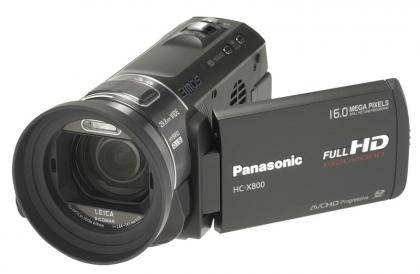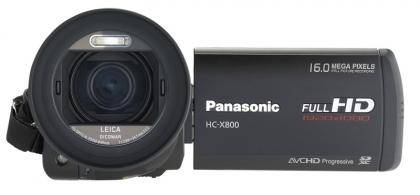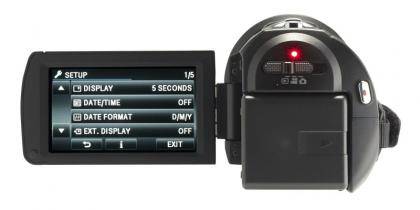Panasonic’s HC-X800 bridges the gap between the lower-specification single-sensor Panasonic HC-V500 and higher-end models such as the brilliant three-sensor Panasonic HC-X900 , and is the update for the HDC-SD800 , our favourite camcorder of last year. It’s slightly smaller than the HC-X900, but is still a medium-sized camcorder. Like the HC-X900, it supports full HD 1080/50p video, as well as 1080i and PAL, but it lacks the viewfinder and audio I/O ports of the HC-X900. It also has a smaller 3in touchscreen. Perhaps more importantly, it retains the X900’s 3MOS sensor, 23x intelligent zoom and its Leica lens, all the things that help the HC-X900 produce fantastic video.

As on the HC-X900, the 3MOS sensor is comprised of three separate sensors, and each sensor is responsible for capturing a specific colour: red, green or blue. The data captured by the three sensors is then combined to create an image that more accurately depicts colour. Like the HC-X900, the X800 also uses Panasonic’s pixel-shift technology, which means the green sensor is offset vertically and horizontally relative to the blue and red sensors. Panasonic claims this produces four times the pixel count of full HD, producing more detail.

As they share sensor technology, we weren't expecting to see any noticeable difference in quality between the HC-X800 and the HC-X900's video; the footage from both looks fantastic, although just as with the HC-X900 noise is apparent in darker environments.
When compared to last year's HDC-SD800, however, we could see that the updated HC-X800 deals with brightly coloured surfaces much better. For example, a white wall filmed with the HDC-SD800 was a single pane of bright white, as if it was a gleaming piece of white fibreglass. In contrast, you can see staining and texture on the same wall in the HC-X800's footage.

The HC-X800's footage shows well defined colours as well as a generous amount of detail. Looking at a single frame of our rooftop test footage, you can clearly see the texture of the metal handrail close to the lens, the texture and staining on the white window surrounds opposite, and the staining and brickwork on a building around 60 metres away. Like the HC-X900, though, the HC-X800 gave bright skies a slightly green hue - not across the whole sky, but only in certain parts. The level of detail also deteriorates towards the edges of the frame, but it's not particularly noticeable. The camera has Panasonic’s new optical image stabilising system (OIS), which aids stability in five different axes, including forward motion, which helps steady footage when you’re walking and panning.
The HC-X800 is significantly cheaper than the HC-X900, but its image quality is just as good. You miss out on some useful features, but if you're not fussed about a viewfinder or using an external microphone, it's a great buy.
|
Basic Specifications |
|
Rating |
***** |
|
Recording |
|
Optical zoom |
12.0x |
|
Digital zoom |
700x |
|
Sensor |
3x 1/4.1in CMOS |
|
Sensor pixels |
3,050,000 |
|
Widescreen mode |
native |
|
LCD screen size |
3.0in |
|
Viewfinder type |
none |
|
Video lamp |
No |
|
Video recording format |
AVCHD 2.0 |
|
Video recording media |
SDXC |
|
Sound |
Dolby Digital Stereo |
|
Video resolutions |
PAL1,920x1,080 |
|
Maximum image resolution |
5,120x2,880 |
|
Memory slot |
SDXC |
|
Mermory supplied |
none |
|
Flash |
yes |
|
Physical |
|
Digital inputs/outputs |
mini HDMI out, mini USB |
|
Analogue inputs/outputs |
A/V out |
|
Other connections |
power jack |
|
Battery type |
Li-ion |
|
Battery life |
1h 45m |
|
Battery charging position |
camcorder |
|
Size |
26x52x86.3mm |
|
Weight |
460g |
|
Buying Information |
|
Warranty |
One-year RTB |
|
Price |
£680 |
|
Supplier |
http://www.argos.co.uk |
|
Details |
www.panasonic.co.uk |
Basic Specifications
Recording
Physical
Buying Information
